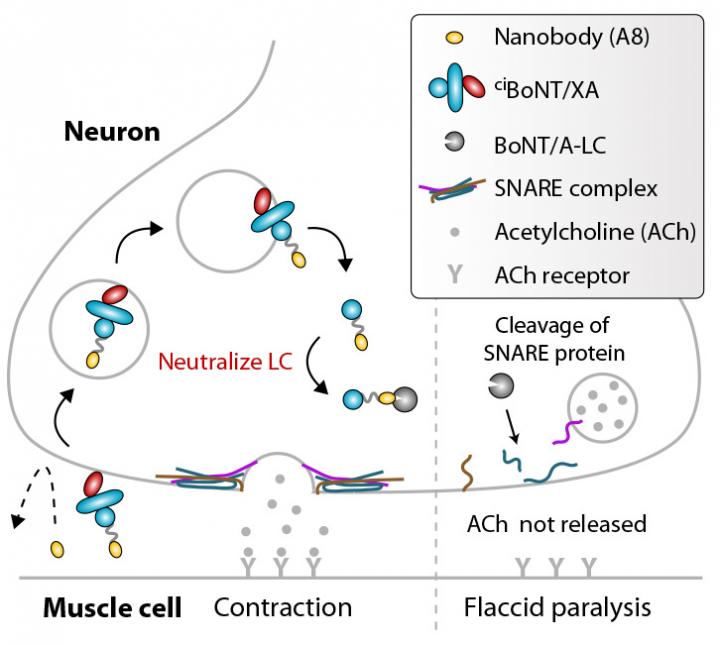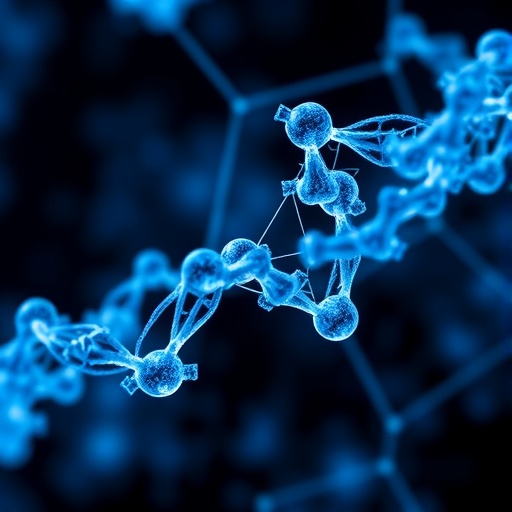
Credit: [Credit: S.-I. Miyashita et al., Science Translational Medicine (2021)]
Taking advantage of the chemical properties of botulism toxins, two teams of researchers have fashioned non-toxic versions of these compounds that can deliver therapeutic antibodies to treat botulism, a potentially fatal disease with few approved treatments. The research, which was conducted in mice, guinea pigs, and nonhuman primates, suggests that the toxin derivatives could one day offer a platform to quickly treat established cases of botulism and target hard-to-reach molecules within neurons. Botulism manifests due to bacterial toxins called botulinum neurotoxins (BoNTs), which are the most potent toxins known to humans. BoNTs work by entering and damaging neurons that coordinate movement, resulting in paralysis that requires intensive care and can potentially last for months. There is a dire need for therapies that can quickly reverse paralysis, but developing treatments for existing cases has been difficult because it is challenging to neutralize BoNTs with therapeutics once the toxins have entered neurons. In the first study, Shin-Ichiro Miyashita and colleagues fused different sections of two BoNTs named BoNT/X and BoNT/A, resulting in a chimeric molecule that is both non-toxic and works as a drug delivery platform. Specifically, the researchers combined a neuron-targeting domain of BoNT/A with another domain of BoNT/X that can deliver therapeutic molecules into the interior of neurons. Miyashita et al. found that their approach rapidly delivered an antitoxin antibody into neurons and neutralized both the BoNT/A and BoNT/B neurotoxins in mice, reversing paralysis within a few hours. Taking a similar approach, Patrick McNutt and colleagues engineered a non-toxic BoNT derivative that safely neutralized BoNT/A within neurons. Their treatment also alleviated paralysis and boosted survival in mice, guinea pigs, and nonhuman primates exposed to lethal amounts of BoNT/A. “This platform offers a transformational approach for a precision treatment that might be adapted to diverse presynaptic diseases,” say McNutt et al.
###
Media Contact
Related Journal Article
http://dx.




